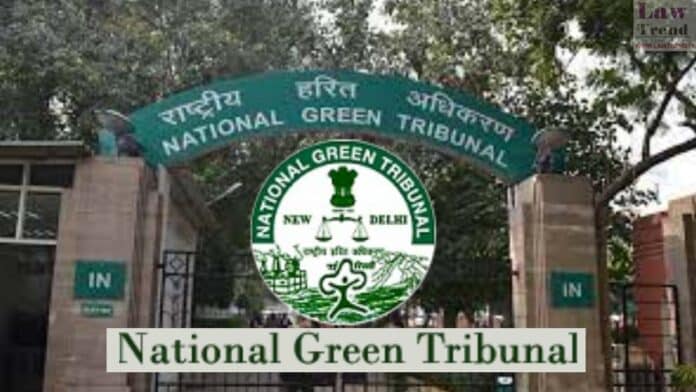The National Green Tribunal has said that it has no objection to the installation of a lighthouse in the greenway adjacent to the Yamuna floodplain for additional surveillance and security.
The NGT was hearing an application filed by the Delhi Development Authority (DDA) seeking permission for the installation of the lighthouse. According to the DDA’s counsel, the plea was necessary in the background of the tribunal’s earlier order prohibiting any construction activity in the demarcated floodplains.
A bench led by chairperson Justice A K Goel said, “…we are of the view that in principle there can be no objection to the proposal if it is approved by the high-level committee (HLC) and is meant for protection of floodplain zone and is within the purview of permissible activity in terms of…the order of this tribunal dated January 13, 2015, and River Ganga (Rejuvenation, Protection and Management) Authorities Order, 2016.”
Earlier in January, the tribunal formed the HLC headed by Lieutenant Governor V K Saxena to deal with the issue of pollution in the Yamuna river.
The bench, also comprising judicial member Justice Sudhir Agarwal and expert member A Senthil Vel, underlined the requirements for examination of the project details, including its location in the context of notified floodplain zone, structural designs, maintenance infrastructure like power backup, basic amenities support and construction period with integrated environmental management requirements.
“Since after order of this tribunal…, the National Mission for Clean Ganga (NMCG) has been named statutory regulator…in our view, a further appraisal of activity being permissible should be by NMCG and if permission is given considering all relevant parameters, suitable safeguards found necessary for the protection of the floodplain zone of Yamuna be adopted,” the bench said.
It further said NMCG had to take a decision, preferably within a month of receiving the proposal and it also had to oversee compliance as per law.
The tribunal noted that according to the application, the HLC was planning and overseeing rejuvenation work and it conceived that to prevent encroachment and for beautification of the floodplain of the Yamuna river, ancillary activities such as biodiversity parks were required to attract and educate citizens, without causing any damage to the floodplain.
It noted that DDA was working on a three-pronged strategy: for the protection of floodplains through its demarcation and repossession of the encroached floodplains, by restoration of the wetlands and by attempting to build a connection for the general public with the Yamuna river.
One of the DDA’s projects was Asita East in the eastern bank. In connection with the project, it had proposed the installation of a lighthouse, for which the encroached area was repossessed and certain activities were undertaken, the tribunal noted.
These included the revival of floodplain forests and grasslands, restoration of floodplain water bodies, creation of catchment zones wherever feasible and the provision of a 75-100 metres wide belt along the existing embankments being developed as greenways with walking and cycling trails along with public amenities to encourage public involvement, the tribunal noted.
Also Read
The DDA, in its application, said the lighthouse serves as a major attraction for the public as a watch tower, thereby also adding to the revenue generation and carrying forward the resolve of involvement of the public at large in this development.
“Vision is to ensure that the Yamuna floodplains will be accessible and attractive to the residents of Delhi-NCR. A lighthouse will further enhance the experience by providing an overview to the restored floodplains and River Yamuna,” it said.
The application also said in view of the current dearth of existing urban spaces in Delhi, for the recreation of the public at large, facilities as envisioned under the rejuvenation plan, will result in the creation of one-of-its-kind urban space and efforts in this direction will assist in the public and citizenry to take ownership of the flood plains and further act as a deterrent for encroachers.




